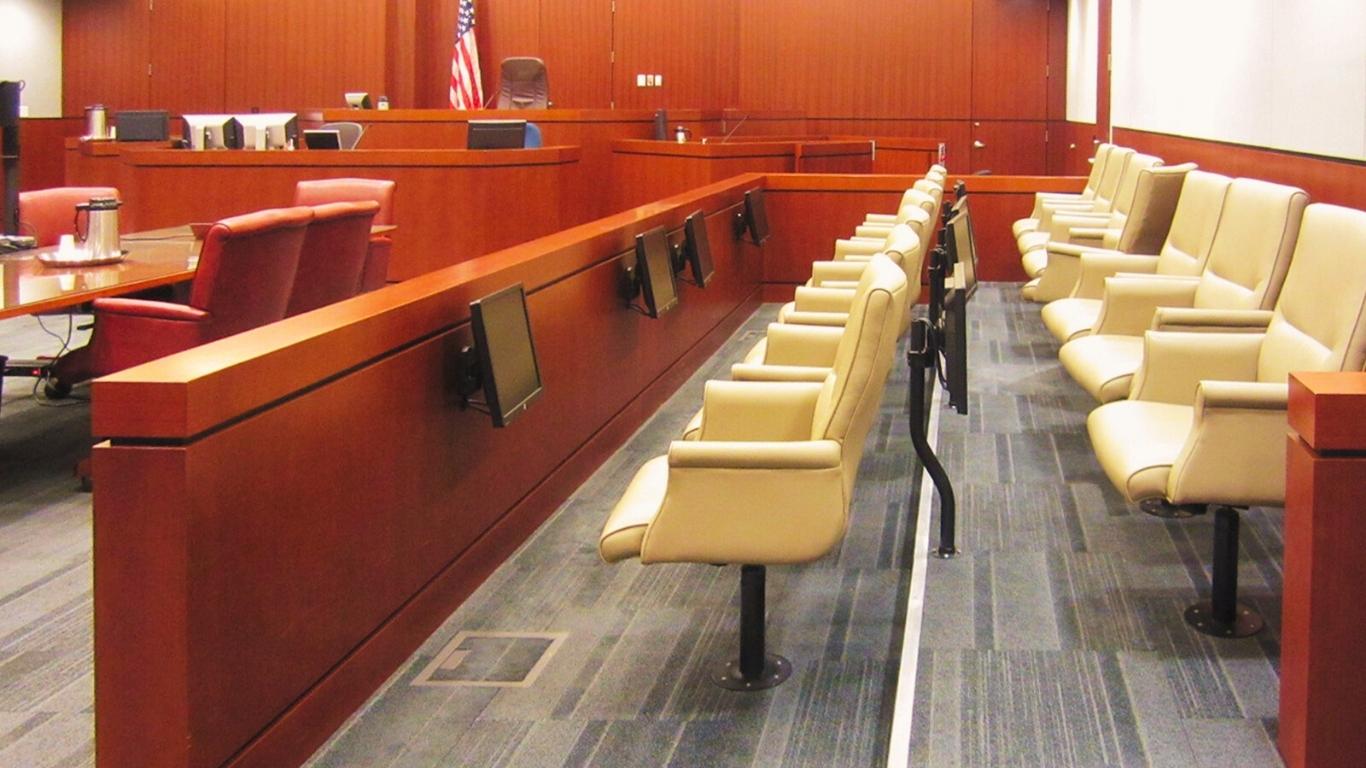Courthouse planning has comprised a large part of my professional experience. During most planning sessions, population projections come up to predict court workload. I have seen numerous studies that examined the number of people in a court jurisdiction per case and the number of people per judge. The assumption is that if the population increases by a certain amount, more cases will be filed, and more judges and court personnel will be needed to process the increasing workload.
Does population drive the workload in a courthouse? In my experience, this question has a "yes and no” answer. Population and caseload are related – the workload will also increase as the population increases in court jurisdiction. However, I have seen many depressed areas where the population has decreased, but the court workload has increased. I have also seen jurisdictions where the population has increased dramatically with little impact on court workload.
Court Workload and Population Factors
The answer is that population should be considered, but only one factor impacts court workload. In courthouse planning, an earnest effort must be made to predict the demand on the courthouse. In this case, “demand” implies the workload processed through a courthouse, which drives the need for personnel and space. Also, as the workload goes up, so will the work in the courthouse, which will also bring in more public participants (though technology has lessened this trend somewhat due to electronic filing, etc.). This increased activity place demands on courthouse space to accommodate the operational increase, additional staff, and more wear and tear on facilities.
In addition to population, what factors should be considered when performing courthouse planning?
- Additional population data – Break the overall population into segments, including age and income. Many other factors could be considered, but I commonly use these two. For example, a substantial increase in ages between 18 and 30 in a lower-income area may impact criminal cases. Conversely, if there is an increase in ages between 55 and 70 in a higher-income area, this may affect civil cases.
- Economic data – Use economic data to highlight trends in business sector growth. Is employment in a jurisdiction increasing or decreasing? What sectors of the economy are increasing/decreasing? What changes in workload could happen based on the increase/decrease in business sectors?
- Geographic data – Consider using geographic data to understand localized patterns. Are there major interstates in the jurisdiction stimulating economic corridors along the interstate route? Are other types of transportation increasing, such as airport traffic, seaport traffic, train activity, etc.? Are there parklands, military bases, and other regional factors that could impact workload?
- Policies and procedures – Changes to policies and procedures can dramatically impact court workload and the trends that drive courthouse demand. Identify changes like adding law enforcement personnel to the jurisdiction, new prosecution policies, introducing technology to enhance operations or make them more efficient, etc.
All of the above points contain data that will stimulate rich discussion on the courthouse planning team (see last week’s blog for an introduction to the planning team). The latter point on policies and procedures is critical to discuss with a cross-section of court and related component representatives. The key to the planning process is to generate realistic assumptions about how the data and trends can impact the current and future operations of the court.
The art of courthouse planning combines quantitative data trends with realistic, qualitative input from the managers in court and related components. I often receive pushback on this point. Why develop assumptions with court managers if there is sufficient data to generate a more rigorous statistical forecast? Statistical methods, like time series analysis, extend historical trends into the future.
Qualitative assumptions from court personnel can give those trends context and meaning – they are not just an extension of history. Still, they should include the impact of new and evolving policies, procedures, and technologies. We use a facilitated process to draw out the assumptions from the court planning team and include those assumptions in the forecasting process.
Now that we have been planning courthouses for over 25 years, we have had the opportunity to see whether statistical data alone would have generated a more accurate forecast or whether the combination of statistical methods and court planning team assumptions created the most valid estimates. The answer is the latter – the combination of robust statistical methods coupled with the expertise of the court planning team managers yields the best result for courthouse planning.
In my next post, we will continue this discussion by examining how a court should forecast trends far into the future.



















